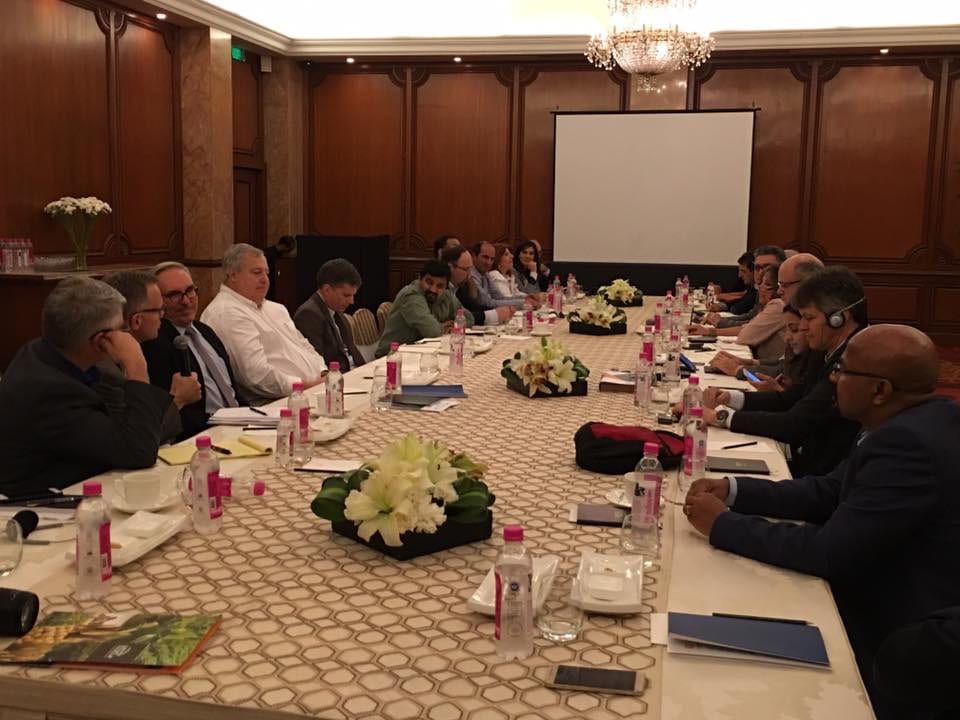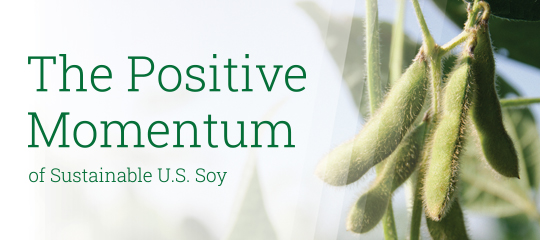
As part of the U.S. Soy industry’s ongoing work with the International Soy Growers Alliance (ISGA), U.S. farmers were represented by Jim Miller, a farmer from Belden, Nebraska and chairman of the U.S. Soybean Export Council (USSEC) and American Soybean Association (ASA) director; and Jimmy Sneed, USSEC and United Soybean Board (USB) director from Hernando, Mississippi on an ISGA mission trip to China and India. Delegates addressed topics ranging from biotechnology to food safety to future demand of these two populous, growing countries.
ISGA was formed in 2006, bringing together farmers and industry representatives from the United States and the South American countries of Argentina, Brazil, Paraguay, and Uruguay. Canada joined the alliance in 2015.
ASA, USB, and USSEC represent U.S. soybean farmers on ISGA.
ISGA’s six member countries supply over 95 percent of the world’s soybean production and share a commitment to meet increasing world demand for quality soy produced sustainably. The mission of this group is to communicate the social, economic, and environmental sustainability of the soybean chain. ISGA also helps to consolidate the voices of soybean producers in opposing market restrictions, excessive tariffs, and scientifically unsound non-tariff barriers regarding environmental, health, chemical residues, or biotechnology approvals.
Although the U.S., Canada, and South America are traditionally viewed as competitors, this collaborative effort helps develop a select few soybean markets.
“We are working to try and impress upon the customers in [the Chinese and Indian] markets of the long-term commitment of the soybean growers around the world and being a good supplier to them to ensure the food security that they need in their countries and to have a good relationship with them,” explains USSEC CEO Jim Sutter.
In China, the delegation attended an ISGA forum, met with media, visited major soybean importers, and met with the Ministry of Agriculture (MOA).
These meetings, says Miller, highlighted the importance of biotechnology. A question and answer session with approximately 15 media outlets “gave us a good opportunity to help educate the people there about the importance of biotechnology, why we use biotechnology on our farms, and helped to dispel some of the myths.”
The meeting with China’s MOA was also critical to the mission’s success.

Sneed says it’s vital to “impress upon [the Chinese] the importance that innovation and technology is going to have as we continue to partner with them to help secure their food supply, their food security. This increased production, being able to feed the population, is something that’s important.”
In India, the ISGA team met with delegates from the Indian government, agriculture ministries, and commerce groups; media; and stakeholders from the feed, food, and soy industries.
While India and China have similar populations, the situations in the two countries are very different. China is heavy on soy use, says Sneed, while the focus in India is on soy oil and soybean meal for livestock.
“This is a market that we are seeking to understand,” he explains.
“There is good growth potential opportunity here if the standard of living can increase and they have a better economy and the people have more money to spend on food,” states Miller. “So we’re looking at that opportunity . . .it’s probably going to be maybe even up to five years before we start the see the opportunities come through, but it is providing us some good outlook on the future for possible work with India as a potential customer.”
Presenting a united front is important to ISGA’s success, Sneed believes. “To allow the diplomats to see that we as farmers were working together toward a common cause and that we were not necessarily competitors in this environment. We were working together and we expected them to work together as well,” he says.
The overall purpose of ISGA’s mission to China and India, says Miller, was “to better understand how we can work together with our ISGA partners and help in our efforts to work with food safety and food security around the world.”
Sneed echoes that sentiment: “This is my second ISGA mission I’ve been on and I’ve been able to get to know my fellow producers in the other countries and understanding their issues and we understand at the end of the day, we’re all soybean growers and we’re all trying to do it in the most responsible, environmentally friendly way that we can. Each country has their own hurdles that may be more than another country’s.”
For more information and to listen to the March 30 media teleconference hosted by Mr. Miller, Mr. Sneed, and Mr. Sutter discussing U.S. Soy’s activities on behalf of ISGA in China and India, please click here or visit www.USSOY.org.
For more information about ISGA, please visit https://www.globalsoygrowers.org/
